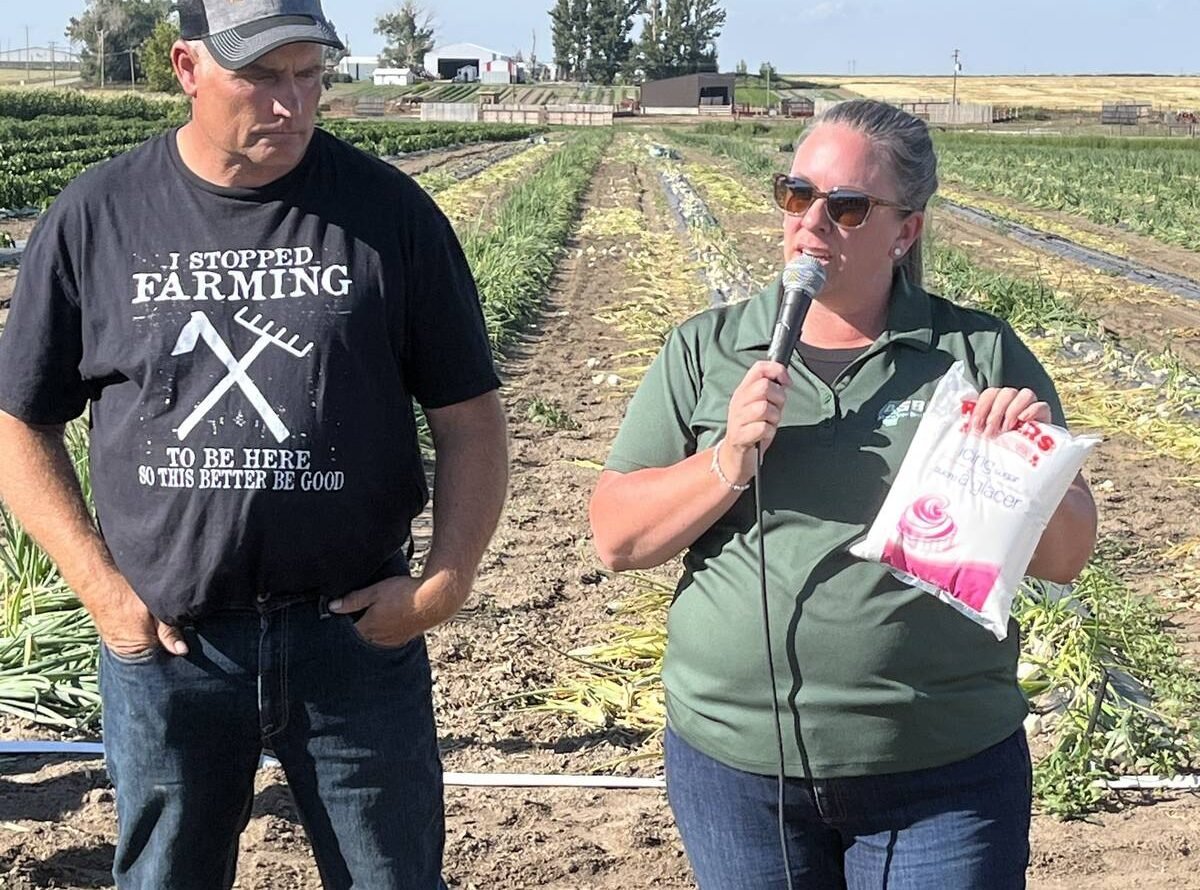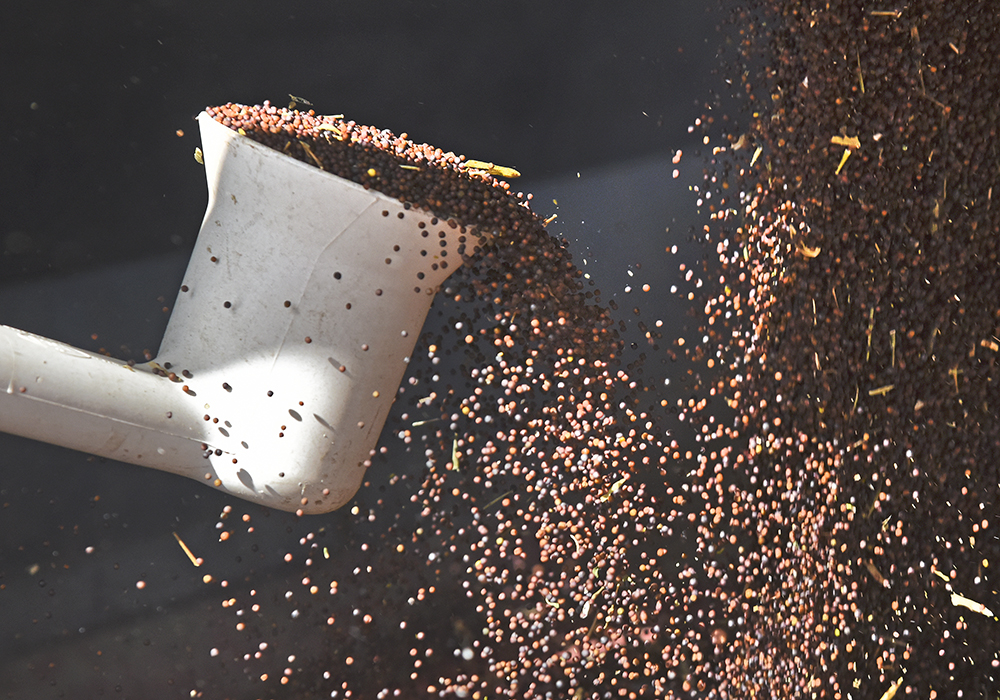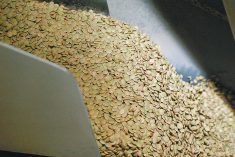Mike Jubinville is waiting for canola to break out of its current range before selling more of the crop.
January canola futures prices seem to have stabilized in the $860 to $880 per tonne range, the MarketsFarm analyst said during the firm’s Oct. 27 Managing Crop Markets in Turbulent Times webinar.
“MarketsFarm is currently 30 percent sold on our cash canola now and I’m looking for the opportunity to make the next sale,” he said.
Read Also

Alberta’s beets a sweet domestic segment in Canada’s sugar supply
The sugar beet industry is showcased during a Farm to Table tour, as Taber features the last remaining sugar beet processing plant in all of Canada.
But it is far from a certainty that prices will break out to the upside. Canola has been trading in a broader range of $780 to $900 per tonne since summer and either of those extremes is possible.
Statistics Canada estimated that Canadian farmers produced 19.1 million tonnes of the crop. Jubinville believes it is closer to 18.7 million tonnes based on conversations he has had with farmers.
Carryout from the previous crop was minimal so supplies are tight.
“We’re still in the process of rebuilding and I think it’s going to take more than one good growing cycle in order to achieve that,” he said.
MarketsFarm is forecasting 9.5 million tonnes of crush, but it could be more than that because crushing is “extraordinarily profitable” with crush margins exceeding $200 per tonne.
World vegetable oil prices nosedived in June but started to recover in October. Soybean oil prices have recovered to US$0.73 per pound from a low of about $0.56 in July, a response to strong global demand for the product.
Exports are pegged at 8.7 million tonnes. China is expected to return to its pre-Huawei incident glory days of buying about four million tonnes of the oilseed.
Jubinville said Canada is going to need purchases from discretionary buyers this year because supplies are much larger than last year. That will keep prices in check.
Canola’s premium over soybean prices soared to “unheard of” levels of $450 per tonne last year.
The normal range is $50 to $100 per tonne. Right now, the premium is in the $150 to $200 per tonne range.
China tends to be a buyer when the premium is $150 per tonne or less.
Ending stocks are pegged at 1.1 million tonnes, which is quite low.
MarketsFarm is 70 percent sold on barley with Lethbridge cash prices bouncing back to $450 per tonne, which is close to the all-time high set last year.
That works out to a grower price of anywhere from $8 per bushel in eastern Saskatchewan to $9.50 per bu. in southern Alberta.
There are reports of two-to-three-unit cars of U.S. corn coming across the border, which could provide a “psychological cap” on barley prices.
U.S. corn is attractively priced at about a $10 per tonne premium to barley delivered feedlot Lethbridge.
Barley will also be facing competition from oats. Growers harvested a massive crop of 4.6 million tonnes. Cash feed oat pricing is at par or above milling oat values, which is extremely rare.
Export values for feed barley work out to about $8.25 per bu. in western Saskatchewan, which is slightly below what Lethbridge feedlots are paying. It provides good underlying support for the commodity.
Jubinville is forecasting 2.5 to three million tonnes of exports, with most of that going to China.
The “fly in the ointment” is the looming December World Trade Organization ruling on the Australia/China dispute, which could result in China dropping its 80 percent tariff on Australian barley.
Canada’s barley ending stocks are forecast at under one million tonnes, which is very low.
While barley prices remain elevated the opposite is happening with oats.
“This market has fallen rather dramatically,” he said.
Milling oat prices are in the $4 to $4.75 per bu. range, while feed prices are in the $4 to $4.95 range. That is down from the high of $10 last year.
“I think we’re finding the bottom here in the oat market,” said Jubinville.
But he believes the market will need some “grind time” to work through supplies.
He is forecasting record feed use for the crop and 630,000 tonnes of ending stocks.
“I wouldn’t say stocks are burdensome at this stage but they’re a whole lot more comfortable for what is a North American-only market,” said Jubinville.
Acres will likely contract next year because the oats are no longer competitive with other cereal grains.
Yellow pea prices are decently supported in the $12.50 to $13 per tonne range.
Statistics Canada estimated 3.5 million tonnes of production. MarketsFarm believes it is closer to 3.25 million tonnes.
The firm is forecasting 2.7 million tonnes of exports, including 1.5 million tonnes to China.
But China could buy a couple of extra boatloads because its domestic soymeal prices are record high right now.
The landed price of peas in China of $440 per tonne works out to about $13 per bu. back on the farm in Saskatchewan, which is an attractive sales opportunity.
MarketsFarm is 50 percent sold on peas.
Jubinville is forecasting 309,000 tonnes of ending stocks, which is tight. That is why he doesn’t expect pea prices to drop.
Where prices go from here will depend a lot on Brazil’s soybean crop. If it harvests a monster crop as is currently forecast, then the upside is limited. But if Brazil’s crop falters, that would be good for pea prices.
Contact sean.pratt@producer.com
















